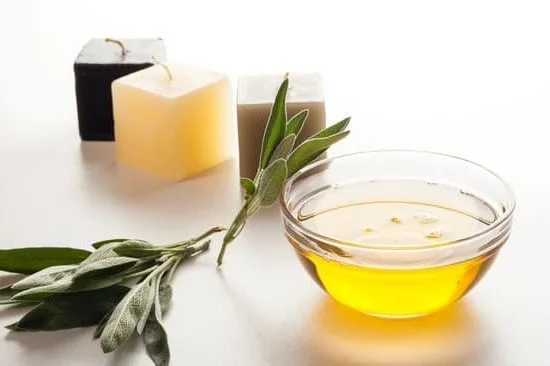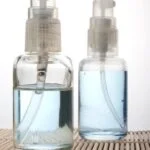Peppermint oil, a popular essential oil widely used in aromatherapy, holds a myriad of benefits for both the mind and body. Known for its invigorating and refreshing properties, this aromatic oil has been treasured for centuries for its therapeutic effects.
In this article, we will delve into the wonders of peppermint oil in aromatherapy, exploring its origins, chemical composition, healing benefits, and more. Join us on this captivating journey as we uncover the power and versatility of peppermint oil in enhancing our aromatherapy experience.
Aromatherapy is an ancient practice that has gained significant popularity in recent years. It involves using plant extracts or essential oils to promote holistic well-being through aroma-induced relaxation and rejuvenation. Peppermint oil emerges as a star player in the world of aromatherapy due to its potent fragrance and numerous beneficial properties.
With a rich history dating back to ancient civilizations such as Egypt and Greece, peppermint has long been valued for its medicinal qualities. The extraction of peppermint oil involves a meticulous process that harnesses the essence of the plant’s leaves through steam distillation or cold pressing methods. This ensures that only the purest form of peppermint oil with all its therapeutic components is preserved for use in aromatherapy.
As we embark on our exploration of the wonders of peppermint oil in aromatherapy, we will discover its remarkable origins and delve into the fascinating chemical composition that underlies its healing effects. By understanding how this powerful essential oil interacts with our body’s receptors, we can better comprehend why it is so effective in aiding various physical and mental health issues.
From relieving headaches to soothing digestive problems, peppermint oil holds immense potential in enhancing our overall well-being through aromatherapy.
Join us on this enlightening journey as we unlock the secrets behind the power-packed aroma of peppermint oil that invigorates our senses while nourishing our mind and body. Let us embark on a path towards embracing the aromatic wonders of peppermint oil in our own personal aromatherapy practices.
The Origins of Peppermint Oil
Peppermint oil, with its invigorating aroma and soothing properties, has been used for centuries in various cultures around the world. To truly appreciate the wonders of peppermint oil in aromatherapy, it is essential to delve into its ancient roots and uncover its intriguing origins.
The history of peppermint dates back to ancient times, where it was believed to have originated in Egypt. The Egyptians valued peppermint for its medicinal properties and used it in various remedies and rituals. The plant eventually made its way to Europe through trade routes, where it gained popularity as a culinary herb and medicinal plant.
Cultivating peppermint plants requires specific growing conditions, making it a revered crop in certain regions. To extract pure peppermint oil, the leaves undergo a steam distillation process that separates the oil from other components of the plant. This careful extraction process ensures that the oil retains its potent therapeutic properties.
Understanding the origins and cultivation process of peppermint oil provides valuable insight into the rich history and quality of this essential oil. By recognizing its ancient roots, we can better appreciate the significance of incorporating peppermint oil into our aromatherapy practices today.
Unlocking the Power of Peppermint Oil
Peppermint oil, derived from the leaves of the peppermint plant, is renowned for its invigorating scent and therapeutic benefits in aromatherapy. To truly understand and appreciate its power, it is important to explore the chemical composition that makes this essential oil so effective.
The Chemical Compounds Found in Peppermint Oil
Peppermint oil contains a variety of chemical compounds, with the most notable being menthol, menthone, and limonene. Menthol is responsible for the cooling sensation that minty products often provide. This compound has been shown to have analgesic properties, making peppermint oil especially effective in soothing headaches and muscle aches.
Menthone, another key compound found in peppermint oil, contributes to its refreshing aroma. It also possesses antiseptic and anti-inflammatory properties, making it useful for treating skin irritations or wounds. Additionally, the presence of limonene adds a citrusy note to the overall scent profile of peppermint oil.
Therapeutic Properties of Peppermint Oil in Aromatherapy
The chemical composition of peppermint oil lends itself to various therapeutic properties that make it a valuable tool in aromatherapy. It exhibits antimicrobial properties that can help combat common pathogens. This makes it an excellent choice for diffusing during cold and flu seasons or when dealing with respiratory issues.
Furthermore, peppermint oil has been praised for its ability to alleviate digestive discomforts such as indigestion, bloating, and nausea. Its analgesic properties make it an effective remedy for headaches as well. In addition to these physical health benefits, peppermint oil is known to promote mental clarity and concentration due to its stimulating effect on the mind.
When used in aromatherapy practices, peppermint oil can uplift the spirit, promote relaxation during stressful times, and enhance overall well-being. Its unique chemical composition plays a significant role in these therapeutic effects, making peppermint oil a staple in many aromatherapists’ collections.
Unlocking the power of peppermint oil requires an understanding of its chemical composition and how it interacts with our senses. By delving into the compounds found within this essential oil and exploring its therapeutic properties, we can appreciate the benefits it offers in aromatherapy. Whether you’re seeking headache relief or an invigorating experience, peppermint oil is sure to unlock its aromatic power.
Healing Benefits of Peppermint Oil in Aromatherapy
Peppermint oil has long been cherished for its healing properties in aromatherapy. When used in this practice, it offers a wide range of physical and mental health benefits. In this comprehensive guide, we will explore the many ways in which peppermint oil can enhance your well-being and provide relief for various ailments.
One of the most notable benefits of peppermint oil in aromatherapy is its effectiveness in relieving headaches. Its cooling and soothing properties help to alleviate tension and promote relaxation. By simply inhaling the scent of peppermint oil or applying a diluted form to your temples, you can experience relief from those stubborn headaches.
Additionally, peppermint oil is known for its ability to ease respiratory issues. It acts as an expectorant, helping to loosen mucus and reduce congestion. This makes it particularly useful for alleviating symptoms of colds, coughs, sinusitis, and allergies. By diffusing peppermint oil or using it in steam inhalation, you can enjoy its respiratory benefits.
Another area where peppermint oil shines is in digestive problems. It has been found to have a calming effect on the muscles of the gastrointestinal tract, which can relieve symptoms such as indigestion, bloating, and nausea. When used topically or ingested under the guidance of a professional aromatherapist, peppermint oil can soothe an upset stomach and support digestive health.
Invigorating the Senses
Stimulating the Sense of Smell
One of the key ways in which peppermint oil enhances the aromatherapy experience is through its ability to stimulate the sense of smell. The scent of peppermint oil is refreshing and invigorating, instantly awakening the senses and creating a sense of alertness. When inhaled, the volatile compounds in peppermint oil reach the olfactory receptors in our nose, which are connected to the brain’s limbic system.
This is the part of our brain that is responsible for emotions, memories, and behavior. As a result, inhaling peppermint oil can evoke feelings of energy and upliftment, making it an excellent choice for those seeking an invigorating aromatherapy experience.
The Refreshing and Uplifting Scent
Peppermint oil has a distinct, minty aroma that is instantly recognizable. Its refreshing scent has been likened to that of crushed peppermint leaves, offering a coolness that can be incredibly soothing during aromatherapy sessions. The uplifting properties of peppermint oil make it particularly beneficial for promoting mental clarity and focus. Whether you’re feeling fatigued or mentally drained, inhaling peppermint oil can help rejuvenate your mind and increase your concentration levels.
Enhancing the Aromatherapy Experience
In addition to stimulating our sense of smell and providing an uplifting scent, adding peppermint oil to your aromatherapy routine can enhance the overall experience in various ways. Its cooling properties can create a soothing sensation on the skin when applied topically during massages or added to bath products. Peppermint oil can also be combined with other essential oils to create custom blends tailored to your specific needs.
For example, mixing it with lavender essential oil can promote relaxation and relieve stress, while combining it with citrus oils like lemon or orange can create an energizing blend perfect for starting your day. With its versatile aroma and compatibility with other oils, peppermint oil truly has the power to elevate any aromatherapy practice.
Safe Usage and Precautions
When it comes to incorporating peppermint oil into your aromatherapy practice, it is crucial to prioritize safety and understand the proper usage guidelines. While peppermint oil offers a wide range of benefits, it is important to use it responsibly to avoid any adverse effects. Here are some key guidelines and precautions to keep in mind when using peppermint oil in aromatherapy:
- Dilution: Peppermint oil is highly concentrated, so it is essential to dilute it before applying or diffusing. Mixing 3-5 drops of peppermint oil with a carrier oil such as sweet almond, coconut, or jojoba oil is recommended.
- Skin Sensitivity: Perform a patch test before applying peppermint oil topically. Apply a small diluted amount on your inner forearm and wait for 24 hours to check for any adverse reactions.
- Avoid Sensitive Areas: Keep peppermint oil away from sensitive areas such as eyes, mucous membranes, broken skin, and genitals. If accidental contact occurs, flush with cool water immediately.
- Not Safe for Children: Peppermint oil should not be used on infants or young children due to its strong concentration. It can cause breathing difficulties in young ones.
In addition to these precautions, there are certain circumstances where the use of peppermint oil may not be appropriate. Individuals with certain medical conditions such as gallbladder problems or hiatal hernia should avoid using peppermint oil internally. Pregnant women should avoid excessive use of peppermint oil due to its potential effect on uterine muscles.
While rare, some individuals may also experience allergic reactions or skin irritation when using peppermint oil. If you notice any adverse effects, discontinue use and consult a healthcare professional.
By following these guidelines and taking necessary precautions, you can safely navigate the world of peppermint oil in aromatherapy and reap its numerous benefits. Remember that everyone’s sensitivities and reactions may vary, so it’s important to listen to your body and adjust usage accordingly.
DIY Peppermint Oil Aromatherapy Recipes
Peppermint oil is a versatile essential oil that can be used in various DIY aromatherapy recipes to create personalized blends. Whether you are looking for a soothing blend to relax or an energizing blend to enhance focus, incorporating peppermint oil into your aromatherapy practice can provide numerous benefits. Below are some easy-to-follow DIY recipes that can help you unleash the aromatic power of peppermint oil:
1. Relaxation Blend:
- 4 drops of peppermint oil.
- 2 drops of lavender oil.
- 2 drops of chamomile oil.
- 1 tablespoon of carrier oil (such as almond or jojoba).
Mix all the ingredients in a small glass bottle and shake well to blend them together. Use this blend in a diffuser or add a few drops to a warm bath to promote relaxation and reduce stress.
2. Energizing Blend:
- 4 drops of peppermint oil.
- 3 drops of lemon oil.
- 2 drops of rosemary oil.
- 1 tablespoon of carrier oil.
Combine all the oils in a glass bottle and mix thoroughly. You can use this blend in a diffuser during the daytime or apply it topically (diluted with a carrier oil) on pulse points for an invigorating boost.
3. Respiratory Support Blend:
- 5 drops of peppermint oil.
- 3 drops of eucalyptus oil.
- 2 drops of tea tree oil.
- 1 tablespoon of carrier oil.
Add the oils to a glass jar and shake well until they are evenly mixed. Apply this blend on the chest and throat area (diluted with a carrier oil) or use it in a steam inhalation method to relieve congestion and promote clear breathing.
Remember, when creating your own DIY aromatherapy blends, it’s crucial to follow safe usage guidelines and properly dilute the essential oils with suitable carrier oils to prevent skin irritation or other adverse reactions. Keep in mind that essential oils are highly concentrated, so a little goes a long way. Start with small amounts and adjust the quantities to your preference.
By experimenting with these DIY peppermint oil aromatherapy recipes, you can discover the incredible benefits that this versatile essential oil can offer for both your physical and mental well-being. These blends can be a valuable addition to your self-care routine or enhance the ambiance of your living spaces.
Exploring Other Applications of Peppermint Oil
Peppermint oil is not only an essential ingredient in aromatherapy, but it also has various other applications beyond this practice. Its versatility makes it a popular choice for skincare, haircare, and even pest control. The unique properties of peppermint oil make it a valuable addition to anyone’s wellness routine.
Skincare enthusiasts have long embraced peppermint oil for its soothing and refreshing effects on the skin. It has anti-inflammatory and antimicrobial properties that can help calm irritation, reduce redness, and combat acne. Peppermint oil is often found in facial cleansers, toners, and moisturizers due to its cooling sensation and ability to control excess oil production.
In the realm of haircare, peppermint oil stimulates the scalp and promotes hair growth. When massaged into the scalp or added to shampoo or conditioner, this essential oil helps increase blood circulation to the hair follicles, resulting in thicker and healthier-looking hair. Additionally, peppermint oil has a cooling effect that can relieve itching or discomfort caused by conditions like dandruff or scalp psoriasis.
Furthermore, peppermint oil has been found effective in warding off pests naturally. Its strong fragrance acts as a natural repellent for insects such as ants, spiders, and mosquitoes. By diluting peppermint oil with water or using it with a diffuser around your house, you can create a barrier against unwanted pests without relying on harmful chemicals.
| Application | Description |
|---|---|
| Skincare | Known for its soothing and antimicrobial properties that help reduce inflammation and control acne. |
| Haircare | Stimulates hair growth by improving blood circulation to the scalp and provides relief from scalp conditions. |
| Pest control | Acts as a natural repellent for insects such as ants, spiders, and mosquitoes. |
Peppermint oil offers a wide range of applications beyond its use in aromatherapy. Whether you are looking to enhance your skincare routine, promote healthy hair, or keep pests at bay in a natural way, peppermint oil can provide versatile solutions. It serves as a testament to the remarkable benefits and adaptability of this essential oil.
Conclusion
In conclusion, the aromatic power of peppermint oil in aromatherapy is undeniable. Throughout this article, we have explored the wonders of peppermint oil and its various applications in this ancient healing practice. From its ancient roots to its chemical composition, we have unlocked the secrets behind why peppermint oil is so effective in aromatherapy.
Peppermint oil offers a wide range of healing benefits for both physical and mental health. Its therapeutic properties have been proven to relieve headaches, respiratory issues, digestive problems, and more. Additionally, the invigorating scent of peppermint oil enhances the overall aromatherapy experience by stimulating the senses and providing a refreshing upliftment.
It is important to use peppermint oil in aromatherapy safely and responsibly. We have provided guidelines and precautions for using it effectively, along with easy-to-follow DIY recipes for personalized blends. Furthermore, peppermint oil is not limited to aromatherapy alone – its versatility extends to skincare, haircare, and even pest control.
Incorporating peppermint oil into your aromatherapy practice can greatly enhance your well-being. Whether you are a seasoned practitioner or new to the world of essential oils, exploring the benefits of peppermint oil is a worthwhile endeavor. So go ahead, embrace the aromatic power of peppermint oil and let it elevate your aromatherapy experience to new heights.
Frequently Asked Questions
How do you use peppermint oil for aromatherapy?
Peppermint oil is commonly used for aromatherapy by incorporating it into diffusers, inhalers, or by applying a few drops onto a tissue or cotton ball. When using a diffuser, add 3-5 drops of peppermint oil to the water reservoir and allow the scent to disperse throughout the room. This can create a soothing and refreshing atmosphere.
If you prefer a more direct approach, inhaling the oil from a tissue or cotton ball can help alleviate symptoms of congestion or headaches. Additionally, blending peppermint oil with carrier oils like coconut or jojoba can create massage oils that promote relaxation.
Is peppermint oil safe for aromatherapy?
Generally speaking, peppermint oil is considered safe for aromatherapy when used properly. However, it is important to note that pure undiluted peppermint oil may be too strong and irritating for some individuals, particularly those with sensitive skin or respiratory conditions.
It is recommended to always dilute essential oils with a suitable carrier oil before topical use and conduct a patch test to check for any adverse reactions. Ingesting peppermint oil should be avoided unless under the guidance of a healthcare professional as it can cause digestive issues in large amounts.
What are the benefits of peppermint oil in the house?
Peppermint oil offers various benefits when used in the house. One primary advantage is its potential ability to repel insects such as spiders, ants, and mosquitoes due to its strong scent. Placing cotton balls soaked in peppermint oil near entry points or areas where these pests tend to gather may help deter them from entering your home.
Additionally, adding a few drops of peppermint oil into homemade cleaning solutions can provide a natural fresh fragrance while helping to disinfect surfaces. The invigorating aroma of peppermint oil also has mood-enhancing properties that can create an energizing environment when diffused or applied topically during household chores or study sessions.

Are you looking for a natural way to improve your health and wellbeing?
If so, aromatherapy may be the answer for you.





